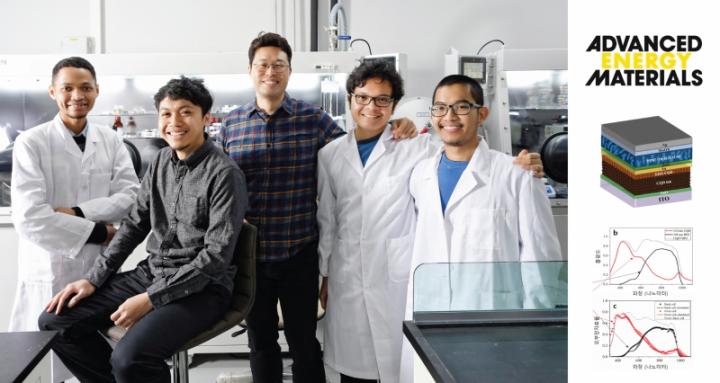UNIST team develops solution-processed hybrid tandem cells

Study suggested the potential to achieve power conversion efficiency greater than 15 percent
Colloidal quantum dot (CQD) solar cells have attracted considerable attention due to the advantages of being flexible and lightweight. They are also much easier to manufacture, compared with silicon solar cells.
QDs absorb light in the near-infrared (NIR) region, which other photoactive layers cannot. However, there are some ares in the NIR region where light absorption does not occur, even with QDs.
Now a research team, led by Sung-Yeon Jang at the Ulsan National Institute of Science and Technology in South Korean (UNIST), has developed high-efficiency, solution-processed, hybrid series, tandem photovoltaic devices featuring CQDs and organic bulk heterojunction (BHJ) photoactive materials. The absorption of the organic back-cell effectively compensates the optical loss in the CQD front-cell, which improves the overall photon harvesting.
The results were published in Advanced Energy Materials.
The team optimised the short-circuit current density balance of each sub-cell, and thus created a near ideal series connection using an intermediate layer to achieve a power conversion efficiency (PCE) that is superior to that of each single-junction device.
The PCE (12.82 percent ) of the hybrid tandem device was the highest among the reported CQDPVs, including single-junction devices and tandem devices, according to the research team.
Furthermore, the new hybrid tandem solar cells are manufactured at room temperature and use a solution process for easy manufacturing. As a result, this solar cell is affordable, more economical, and having less cost as compared to silicon solar cells. Their lower manufacturing costs also gives them a clear advantage mass production.
"The hybrid tandem device exhibited almost negligible degradation after air storage for three months," says Jang. "Moreover, this study suggested the potential to achieve PCE of greater than 15 percent in hybrid tandem devices by reduction of energy loss in CQDPVs and enhancement of NIR absorption in OPVs."
'Efficient Hybrid Tandem Solar Cells Based on Optical Reinforcement of Colloidal Quantum Dots with Organic Bulk Heterojunctions' by Havid Aqoma et al; Advanced Energy Materials, January 13, 2020.


































